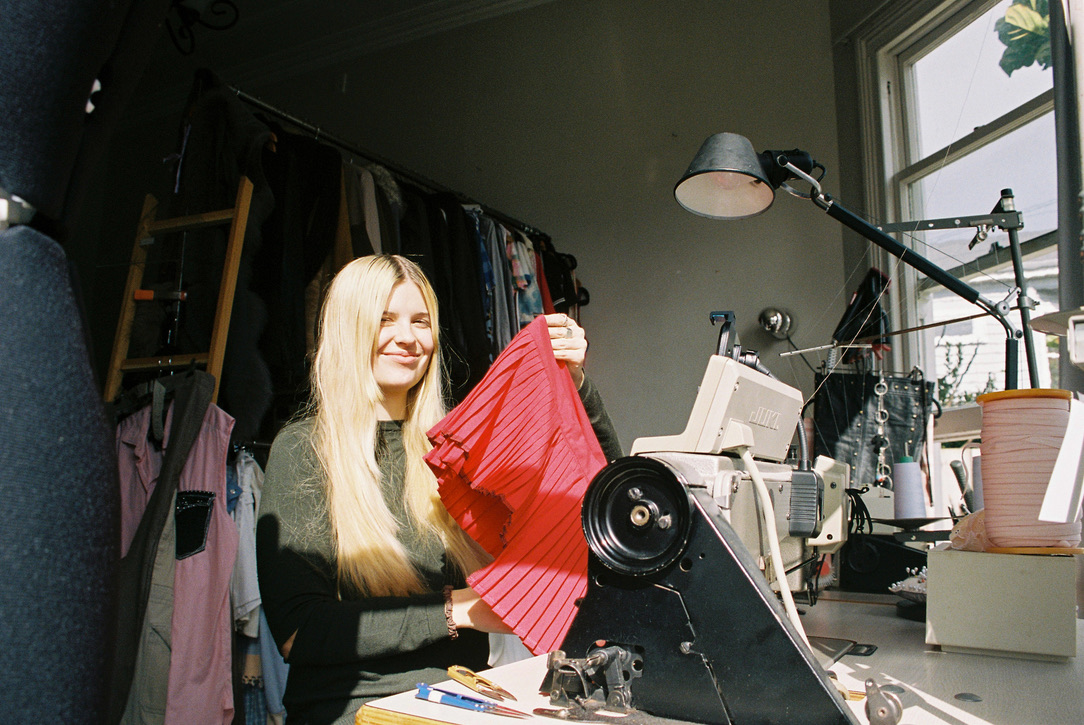
You might recognise Mima Kitchen’s frilly pink bow bags from Crushes on Karangahape Road – the creative mecca of Tāmaki Makaurau – where she’s been quietly sewing behind the scenes. What you might not know is that they began life as a giant bow handmade for Petra Bagust, cut down, repurposed and reimagined. To Mima, nothing is ever single-use.
Last week, I visited her bedroom-turned-studio, where her bed sits only millimetres from her clothing rack. In one corner, a pile of fabric scraps sits, a mannequin in another, jars of vintage buttons (some dating back to the 1940s) stacked beside threads and beads. Her own wardrobe – black, grey, minimal – sits above a rack of lime greens, bubble-gums and lettuce-hemmed frills: her debut collection, Lucky.
Despite just having pulled an all-nighter, Mima is full of bubbly energy in the glow of creative flow and morning Tāmaki sun. With her first solo show for Lucky set for August 27 at Te Wiki Āhua o Aotearoa, Mima is determined to change how we think about clothes. For her, garments are not disposable trends but living objects with histories, imperfections and the potential for infinite reinvention.
• The Lucky show at Mima Made It, at Te Wiki Āhua o Aotearoa is on Wednesday August 27 at 7pm; buy tickets here.
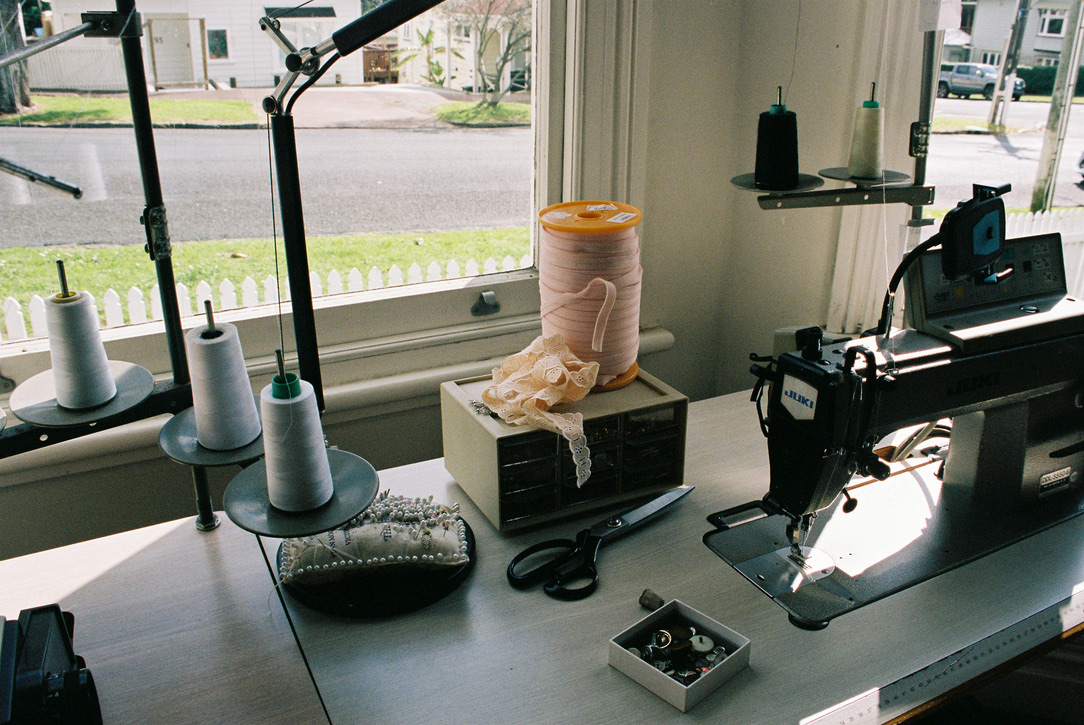
Rosa-Lee: When did your relationship with fashion start?
Mima: It’s always been there. I used to make clothes for my Barbie dolls. I always loved it, but I never realised that it was something I could actually do until year 12, when my mum said: “Well, have you thought about going into fashion?” I was like, wait, is that something you’re allowed to do?
From then on, I spent every lunchtime and morning tea in the sewing room, overlocking tiny scraps of fabric. I found so much joy in it. Then I went to fashion school to learn how to sew. But as my dad always said, “Learn the rules to break the rules.” So, I do things “wrong” on purpose all the time now. Mistakes often turn into my favourite parts of a garment.
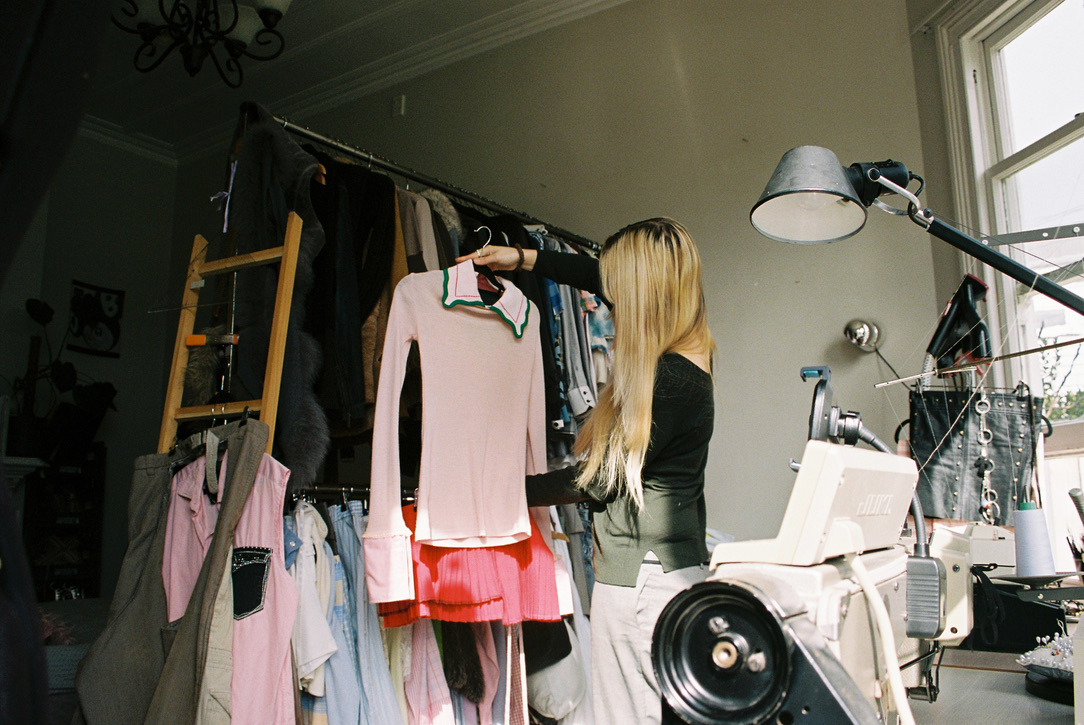
What sparked your commitment to slow fashion?
When I was 16, Rose [co-owner of Crushes] gave a seminar at a youth camp about the fashion industry. I went home and watched the documentary The True Cost, which goes deep into every part of production – from cotton farming to dye waste to toxic shoe glue. That night, I went cold turkey on buying new clothes. I didn’t buy anything new for six years. I went to a mufti school, and the girls would often say, “I’m out of clothes, I don’t have anything to wear!” And I would say: “Are you out of clothes or are you out of ideas?” Play with what you have! Have a dress-up day in your own wardrobe! You already have enough stuff. Put your shirt on backwards, style it differently. Be an outfit repeater.
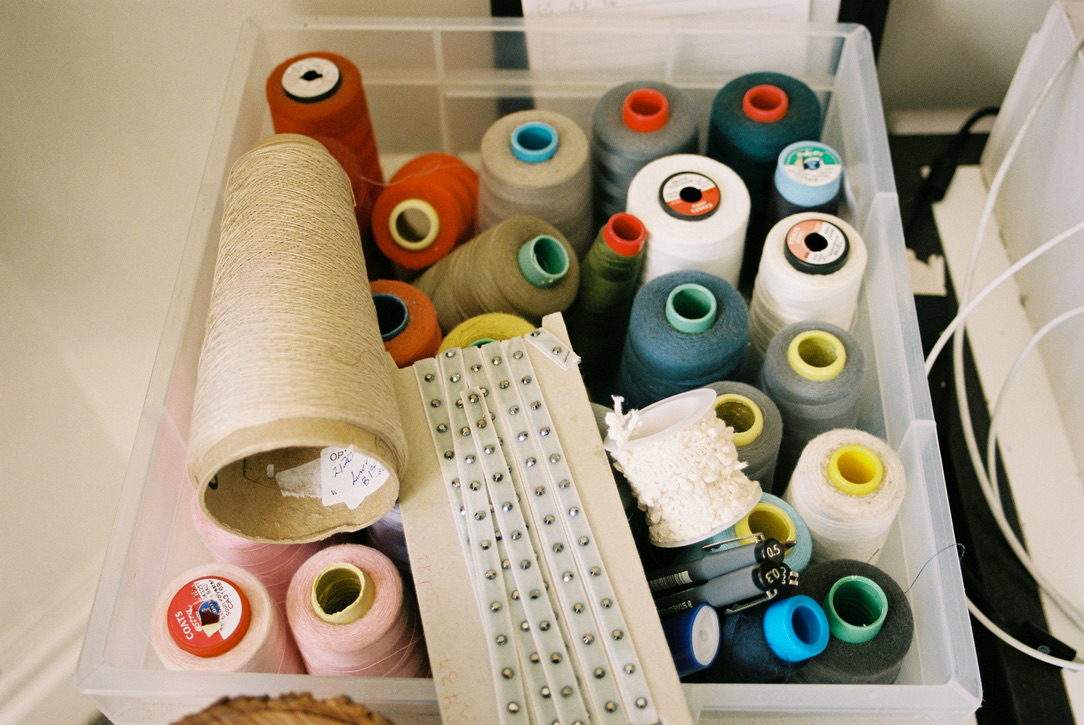
What does “sustainable fashion” mean to you?
Sustainable fashion to me is kaitiakitanga – it’s stewardship. It’s about embracing a circular economy. Buy less. Buy better. Buy stuff that lasts. Make something from what we already have. During WWII, the Make Do and Mend movement encouraged people to repair, reuse and recycle clothes due to fabric shortages. They cut up curtains, reused textiles, and repeated the process. We don’t need more clothes, we need to cherish what exists.
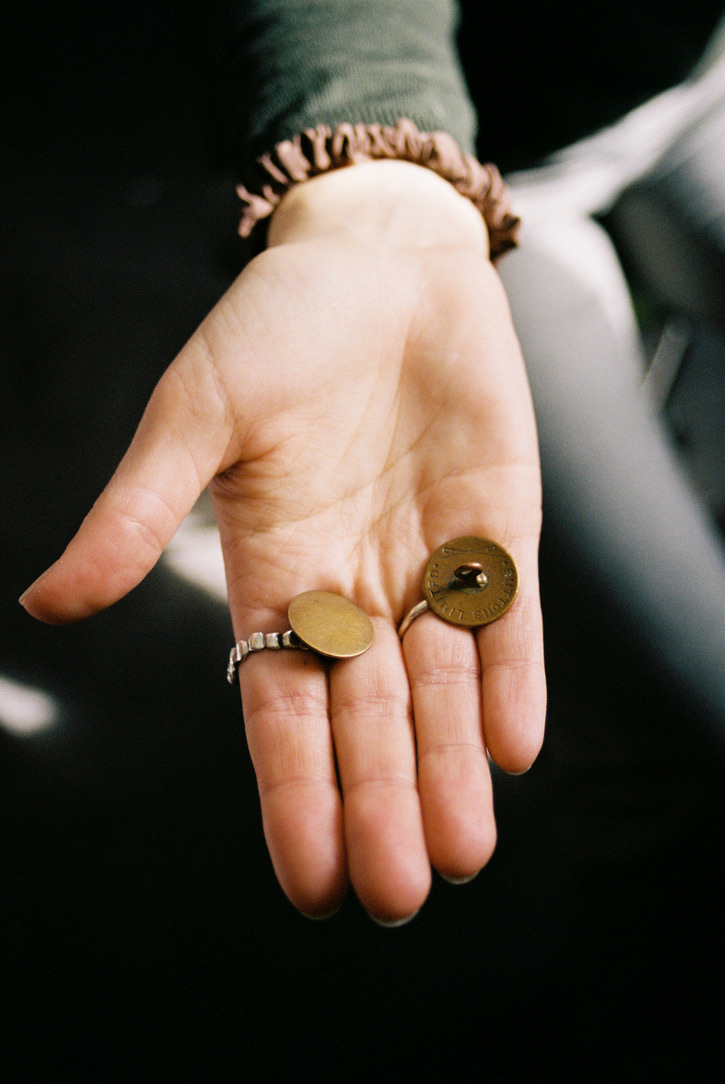
Could you talk me through your creative practice process?
There’s a 3-for-$5 rack at the Red Cross on K Road – that’s where everyone puts items that don’t quite work. I look for real things – cotton, linen, quality fabrics – and cut around imperfections. I use these flaws to design the piece, which always has fun, unique outcomes.
I love draping on mannequins. I haven’t used a single pattern for my collection. People notice stains, and I say: “Yeah. She’s lived. She’s had a whole other life before this.” Why does everything have to be perfect?
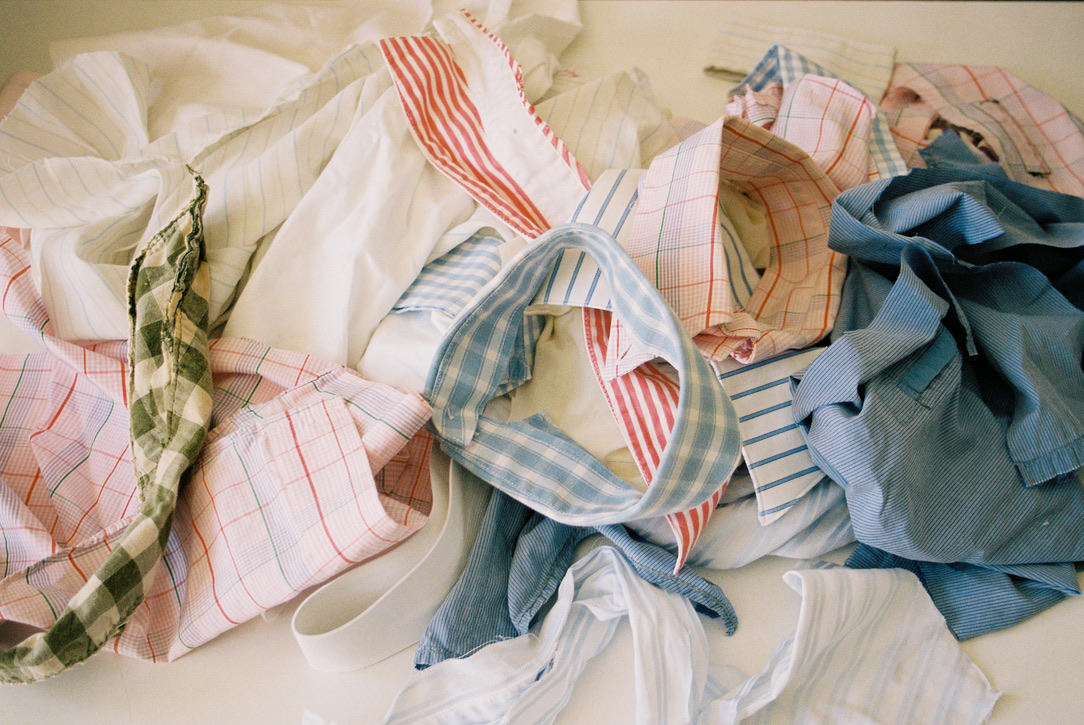
How do you navigate being a fashion designer in an algorithm economy?
When you make something from old garments, everything becomes one-of-a-kind. It’s not the most profitable approach, but having something no one else has makes it special – you can treasure it and hold onto it. You won’t see someone else walking down the street with it.
Maybe that’s just my individuality complex, but we need to move away from, “I only want to wear this top because I saw someone else wearing it on Instagram.”
Compliment someone’s jacket and they say, “It was my Grandma’s” – clothing has stories! Not long ago, every garment we wore was made by mothers or grandmothers. Everything I make is one of one because I source everything vintage, from buttons to threads. I take inspiration from vintage garments themselves; the quirks and details I find out in the wild, not the internet
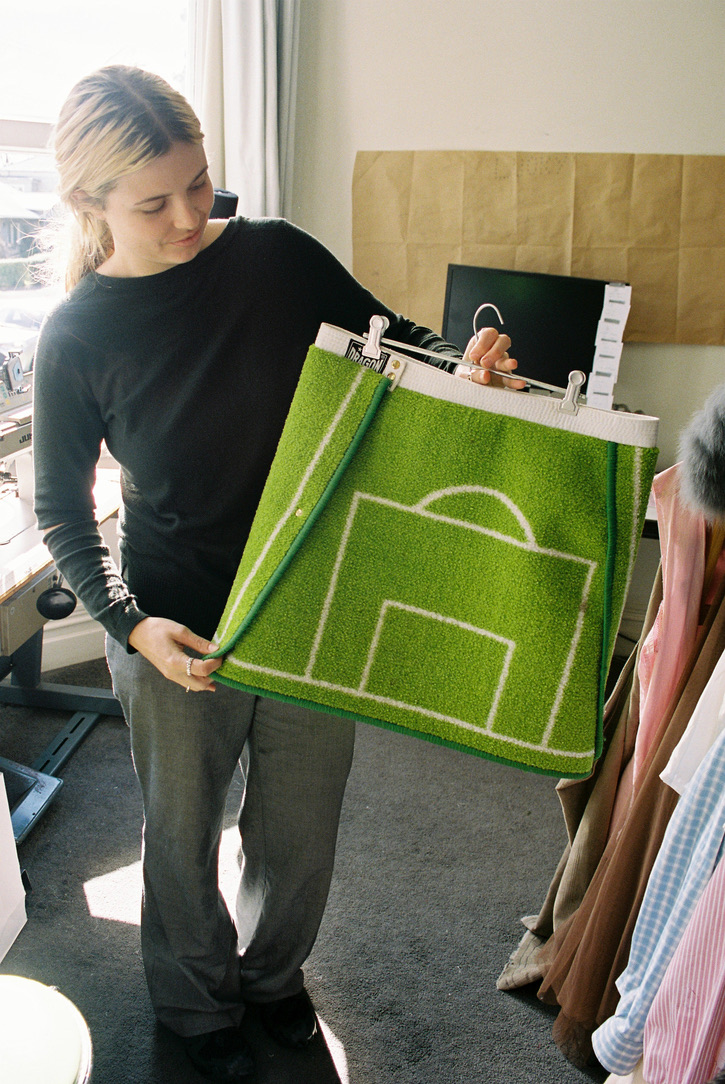
You are the visionary behind Slow Fashion by Crushes. Has Crushes been a creative haven?
Yessssss. It’s rare someone truly sees you. Rose just said “yes” to everything and encouraged me. Looking back, some things she hyped weren’t very good! But she made me believe in myself. Crushes gave me two years of making, showing that you can create a community and approach things differently.
How did Lucky come about?
It’s kind of woo-woo. A customer came into Crushes looking for a shop called Lucky. A few days later, I was handed a card that said “Lucky – Year of the Snake.” Then I started seeing “lucky” everywhere. It felt like a sign. When you adopt a “lucky” mentality and choose to see the good in the world, life becomes more enjoyable. That’s how I want people to feel when they’re wearing the clothes – blessed, chosen, like the universe is on their side.
And your upcoming show, what can we expect?
Community. Serotonin. My favourite DJ. I want it to feel like a party where everyone’s welcome and part of it!
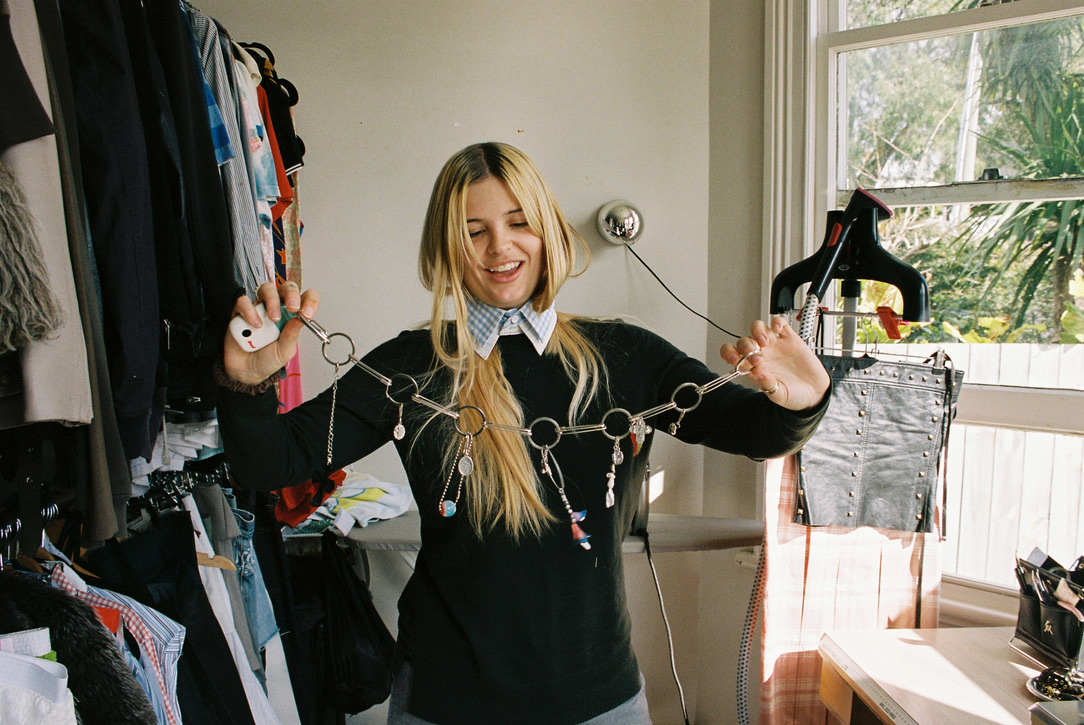
Is there anything you’d want the wider public to know about sustainable fashion?
Stop feeling guilty. Sustainability isn’t about perfection – it’s about hope. Small changes matter. You don’t have to fix the world, just do a little better. Make a small change. Let’s focus on the fun and the good parts of it.
How would you describe the feeling of being a young creative in New Zealand right now?
It can feel serious and not serious at the same time. I choose to embrace chaos. I listen to lawyers talk about depositions, and I’m like, “damn, I just have to make a bunch of skirts tonight.” I feel grateful. There’s a community here, and it’s worth finding. There’s no set path – you have to make your own. It’s scary and hard, but so worth it.
.jpg)




